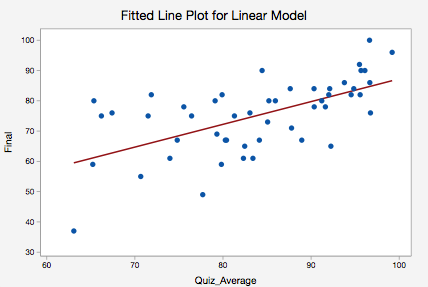
- #RESIDUALS VS THE VARIABLES MINITAB EXPRESS HOW TO#
- #RESIDUALS VS THE VARIABLES MINITAB EXPRESS CODE#
#RESIDUALS VS THE VARIABLES MINITAB EXPRESS HOW TO#
Next, we will look at how to fit a simple linear regression. This fitted model can then be subsequently printed, summarized, or visualized moreover, the fitted values and residuals can be extracted, and we can make predictions on new data (values of X) computed using functions such as summary(), residuals(), predict(), etc. A typical call may look likeĪnd it will return a fitted model object, here stored as myfunction. I think the problem might be in coded variables, are uncoded variables converted into coded ones in the same way, or it might be done differently Or the. In R, models are typically fitted by calling a model-fitting function, in our case lm(), with a "formula" object describing the model and a "ame" object containing the variables used in the formula. We will review how to assess these assumptions later in the module.
#RESIDUALS VS THE VARIABLES MINITAB EXPRESS CODE#
Here is some example code to see what happens when assumptions are violated x = 1:100 If your regression assumptions are met, you'll get a flat line, as any slice of your residuals should be mean zero (and often normally distributed). If the data is not linear, there will be a pattern to the residuals and this is one way of helping you see that.

In response to your comment asking more about the line:

On your plot, this means that the point labeled 25 had a predicted value of about 525 but the residual was around -200, meaning its actual value was closer to 325. Remember that a residual is $e_i = y_i - \hat_i$ which is the true $y_i$ minus what the regression estimates should be the outcome for point $i$. In this case it's pretty flat, which provides evidence that a linear model is reasonable. Give the equation of your regression line. To get a residual plot, select 'Graphs' before clicking 'OK', click in the box 'Residuals versus the variables' and then select your predictor variable. For example, if you fit a linear regression on data that looked like $y = x^2$ you'd see a noticeable bowed shape. Minitab Express does provide a scatterplot automatically with the regression output. Basically, it's smoothing over the points to look for certain kinds of patterns in the residuals. Again we will use a transformation of variables and refer to Section 7.3, to express the. The red line is a LOWESS fit to your residuals vs fitted plot. Includes a Data Disk Designed to Be Used as a Minitab File.


 0 kommentar(er)
0 kommentar(er)
